Q1: In your view, what has been the greatest innovation in the P/C insurance industry in recent years? Explain.
This article is part of our insurance innovators interview series.
- Q1: The greatest innovation in the P/C insurance industry
- Q2: Describe the greatest innovation at your company
- Q3: Innovation or innovator outside the insurance industry
- Q4: How your company encourages innovation
- Q5: The biggest obstacle to innovation within the insurance industry?
- Q6: The next innovation to impact the P/C insurance industry
- Q7: Your role in leading innovation.
- Q8: Best book you have read about innovation
- Q9: Describe a failed initiative at your company
- Q10: Collaborating with market competitors
- Q11: Can P/C insurers disrupt other industries?
Carrier Management reached out to leaders of property/casualty insurance companies and related service providers to respond to questions about innovation. Topping our list, we asked executives to identify what they viewed as the most groundbreaking change they have witnessed in the industry.
Here we present 16 responses to our first question:
Q1: In your view, what has been the greatest innovation in the P/C insurance industry in recent years? Explain.

Watson (Argo): I don’t think there is a single game-changer that stands out from the rest. But that will change—and soon. We are in the midst of a digital/customer-driven interaction movement that is already beginning to reshape our industry, our distribution models, our business processes, and our products and services. To stay relevant and viable over the long term, insurers can choose to invest in digital technologies or digitize their entire business, or do both.
Bottom line: An ongoing commitment to innovation is just one of many requisites to maintaining a strong position in today’s value chain. The greatest innovations are coming—and soon.

Wurzler (OneBeacon Technology): One of the more significant innovations in the property/casualty industry has been the development of telematics and big data models that enable carriers to operate more efficiently. By providing ready access to intelligent data streams, underwriting models have become more sophisticated and useful for day-to-day risk management decisions.
Rios (American Modern): Mobile technology and social networking are changing everything. Customers now have the ability to do so many things, like file a claim or pay a bill, on their personal devices. That gives them the power to interact when and how they want to with an immediacy that provides a sense of freedom. That’s really upped the game and upped service expectations as well.
Galanski (Navigators): The development of construction wrap-ups, also referred to as “project policies,” has allowed construction specialists like Navigators to insure construction risks that would have been very difficult if not prohibitively expensive to insure in a traditional manner. We entered the wrap-up market a little over a decade ago when it was still a relatively new approach. Today, it is a favored approach for sophisticated construction projects.
Kelley (Ironshore): The evolution of new products and services within the insurance sector is ongoing as insurance companies strive to develop innovative solutions that respond to market demand. One of the signature coverage innovations over the past 20-25 years has been employment practices liability insurance.

EPL standalone coverage protects company directors, officers and employees against claims of alleged wrongful employment practices. While an essential cover for virtually any company, the market for the product has taken time to mature. One reason for the gradual evolution of market acceptance of EPL coverage is that the product required identification and education of risk given legal developments and changes in the law.
The EPL product is not just a risk transfer structure but rather embodies a service component. Insurers had to educate the buyers of the product, enabling them to identify myriad aspects of the underlying risk and fully understand best practices to help mitigate exposure.
Colberg (Assurant): The insurance industry has a reputation for being conservative when it comes to innovation, which is often appropriate as we balance risks, are highly regulated as an industry, and need to be compliant with applicable statutes and regulations. Sometimes this has affected the rate of change in our business. For example, homeowners insurance has not evolved dramatically over the last 30 years, and one of the biggest changes in auto insurance was carriers selling direct to consumers.
The pace of change has quickened in recent years as insurance companies begin to compete with nontraditional players in the market. Thus far, the most disruptive innovation has been in the use of telemetrics, a technology that involves the automatic measurement and transmission of data from remote sources. Insurance companies are using telemetery to self-select the risks they want. Essentially, they are implementing technologies to gather data on their policyholders to assess risks and price to those risks. It is brilliant.
Several auto insurance companies are using these technologies to identify and reward good drivers. Now some of these companies are beginning to use telematics to identify bad drivers and price to those risks. Drivers who thrill at speeding down the highway or running red lights may decide to pull out of these programs or face higher premiums.
Pratt (Progressive): One of the biggest shifts we’ve seen in our industry over the past decade is the emergence of usage-based insurance. It’s changing how carriers price and how consumers think about auto insurance.
We’ve found actual driving to be more than twice as predictive of future losses than other nondriving variables traditionally used to price insurance.
We’ve advanced our usage-based program, Snapshot, as the technology itself has advanced. What once used a large piece of equipment that required a mechanic to install has evolved into a small, pocket-sized device that plugs into a car’s on-board diagnostic port, transmitting driving information to us via cellphone technology.
We’ve collected more than 12 billion miles of driving data through our Snapshot program, and we’re able to provide consumers with fairer, more accurate prices based on how they actually drive.
Ward (Hamilton): One of the biggest innovations in the marketplace has to be the commoditization of large portions of the personal lines market, particularly auto. In order for that change to take place, a number of technological and marketplace changes had to occur. Carriers had to be able to pull electronic data about insureds from public sources, sophisticated predictive models were built to consume that data, and buyers migrated from a traditional agency model to online purchasing.

Rao (PwC): The greatest innovation in the P/C insurance industry is in the use of data and analytics to better understand risk and price it appropriately. Building predictive models using statistical techniques and machine learning techniques is revolutionizing how insurers are able to segment customers and their risk characteristics, evaluate terms and conditions, and maximize profitability.
Better understanding of risk also allows for greater standardization and as a result greater automation, further decreasing the costs of underwriting. Personal auto insurance is already heavily auto-underwritten. The trend continues with predictive models being built for home insurance, commercial property, workers compensation and other lines.
Cyber risk and supply chain risk are also gaining increasing attention with efforts to build predictive models that can help better assess and price these risks.
Sciolla (Gen Re): At or near the top of my list for notable industry innovations would be predictive analytics because of the many uses and benefits. What had its roots in property-catastrophe insurance took hold in personal auto and is now being implemented for commercial lines.
We see innovative applications in underwriting, marketing and claims. Even some smaller-scale uses can reap significant benefits. One example is identifying claims for further medical or fraud analysis or accounts for premium audits. One of our companies is developing predictive modeling applications in the workers compensation claim area that offer great potential. There is no limit really on where this area of innovation can take us.
Lightfoot (Guy Carpenter): The greatest innovation has come from the ability to better understand catastrophe risk and turn that enhanced understanding into risk and capital management strategies that management feels confident in deploying.
Hendrick (XL Catlin): Over the last 20 years, we’ve seen a transformation in catastrophe risk management—from its insurance and reinsurance origins into a new asset class that has caught the interest of capital market investors seeking a diversified return. We’ve seen some explosive growth in alternative capital markets, with recent reports estimating that alternative capital has captured some 20 percent of property-catastrophe reinsurance’s market share right now. Some estimate that alternative reinsurance capital could double in size to $100 billion within the next few years. There exist today numerous new options to help manage and mitigate catastrophe risk.
McGavick (XL Catlin): How commercial insurers are using data and analytics to analyze risks is our greatest innovative move in recent years. We’ve only seen the “tip of the iceberg.” New sources of analytics can be harnessed and put to work to make our operations more efficient but especially to help us solve problems for our clients.
The insurance industry has relied on loss information, things that have happened in the past. Today, big data and analytics are giving us more opportunities to develop new insights on new and emerging risks.

Lee (AIR Worldwide): Big data. The exponential growth in the availability of both structured and unstructured data is a game-changer and has begun to pervade all aspects of the industry. Companies today are already ingesting data from many sources and getting value from them. The future offers even more data, such as from social media and aerial pictometry. The Internet of Things will soon provide information as granular as the location and contents of every cargo container on the planet.
We see big data as well in catastrophe risk management. Global companies want to analyze the risk of tens of millions of locations, each of which is captured in ever-increasing detail—and they want to do it in near real time. The catastrophe models themselves are becoming increasingly sophisticated and running at ever-higher resolution, and 100,000-year “stochastic catalogs” or larger are becoming the norm. The ability to handle and make sense of the volume of data available today is necessitating major technological changes at AIR.
Hay (KPMG): Big data, analytics and predictive modeling are transforming the insurance industry. The global volume of data is growing by the millisecond, and insurers are finding new ways to harness data to find growth opportunities, enhance operational performance, improve customer acquisition and retention, and drive business results. The critical issue has become not the availability of data but identifying what data to gather, how to analyze it effectively, and how to apply the results to the business.
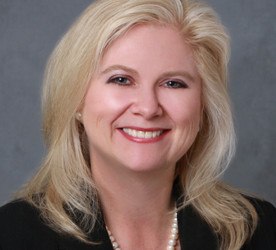
Data and analytics has revolutionized the way many lines of business are priced and underwritten and has been instrumental in creating new Fortune 500 companies like Progressive in the insurance sector.
In addition, customer demands are driving technology investment and the development of innovative products and services like usage-based auto insurance and telematics products and remote claims service by phone or drone.
Whether it is auto insurers allowing customers to upload photos of minor accident damage via their smartphones or expediting payments via direct deposit, the customer simply expects more. Insurers must innovate to stay relevant and gain competitive advantage.
Lupica (ACE): Predictive analytics is proving to be a groundbreaking innovation. It has so many applications within insurance—in underwriting, claims, capital management. And the benefits to policyholders are tangible.
For example, over the two years that ACE applied a predictive analytics methodology to workers compensation claims, we saw claims savings in the millions of dollars. We just recently brought ACE 4D, our next-generation predictive modeling and data analytics solution, to market. Today, it can help claim adjusters identify opportunities to intervene and improve claims outcomes through our online insurance program management platform, ACE Worldview. However, going forward, I’m confident it will improve our underwriting and actuarial acumen, and raise our game as an insurer.
Read other innovator’s response by question:
- Q1: The greatest innovation in the P/C insurance industry
- Q2: Describe the greatest innovation at your company
- Q3: Innovation or innovator outside the insurance industry
- Q4: How your company encourages innovation
- Q5: The biggest obstacle to innovation within the insurance industry?
- Q6: The next innovation to impact the P/C insurance industry
- Q7: Your role in leading innovation.
- Q8: Best book you have read about innovation
- Q9: Describe a failed initiative at your company
- Q10: Collaborating with market competitors
- Q11: Can P/C insurers disrupt other industries?
Read more Innovation Insights by Person:
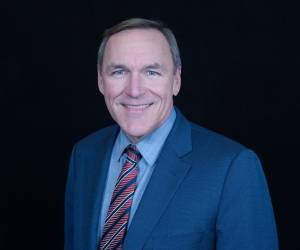 Stanley A. Galanski, President and CEO, The Navigators Group, Inc.
Stanley A. Galanski, President and CEO, The Navigators Group, Inc. Mark E. Watson III, President and Chief Executive Officer, Argo Group International Holdings, Ltd.
Mark E. Watson III, President and Chief Executive Officer, Argo Group International Holdings, Ltd. Kevin H. Kelley, Chief Executive Officer, Ironshore Inc.
Kevin H. Kelley, Chief Executive Officer, Ironshore Inc. John Wurzler, President, OneBeacon Technology Insurance
John Wurzler, President, OneBeacon Technology Insurance Alan B. Colberg, President and Chief Executive Officer, Assurant, Inc.
Alan B. Colberg, President and Chief Executive Officer, Assurant, Inc. Manny Rios, President and CEO, American Modern Insurance Group
Manny Rios, President and CEO, American Modern Insurance Group Dave Pratt, General Manager, Usage-Based Insurance, Progressive
Dave Pratt, General Manager, Usage-Based Insurance, Progressive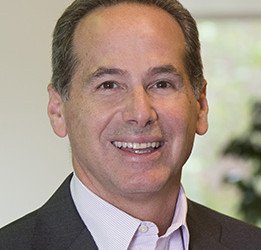 Berto Sciolla, EVP and Manager of North American Treaty Reinsurance,Gen Re
Berto Sciolla, EVP and Manager of North American Treaty Reinsurance,Gen Re Greg Hendrick, Chief Executive, Insurance, XL Catlin
Greg Hendrick, Chief Executive, Insurance, XL Catlin Anand Rao, Principal, PwC U.S. Advisory Practice
Anand Rao, Principal, PwC U.S. Advisory Practice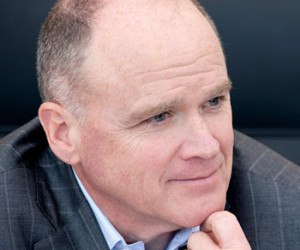 Mike McGavick, Chief Executive Officer, XL Catlin
Mike McGavick, Chief Executive Officer, XL Catlin David M. Lightfoot, Managing Director, Head of GC Analytics – Americas, Guy Carpenter
David M. Lightfoot, Managing Director, Head of GC Analytics – Americas, Guy Carpenter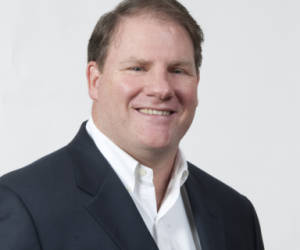 Conan Ward, Chief Executive Officer, Hamilton USA
Conan Ward, Chief Executive Officer, Hamilton USA Ming Lee, Chief Executive Officer, AIR Worldwide
Ming Lee, Chief Executive Officer, AIR Worldwide Laura Hay, National Insurance Sector Leader, KPMG LLP
Laura Hay, National Insurance Sector Leader, KPMG LLP John Lupica, Vice Chairman, ACE Group; Chairman, Insurance–North America
John Lupica, Vice Chairman, ACE Group; Chairman, Insurance–North America
Get all 16 interview neatly packaged in a single PDF download. Explore ideas by personality and by question. More than 60 pages of content.





















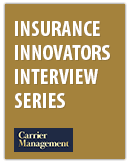
 The Workplace Is Changing; So Are the Risks for Employment Discrimination Claims
The Workplace Is Changing; So Are the Risks for Employment Discrimination Claims  Buyer-Friendly April Reinsurance Renewal Bodes Well for Mid-Year Renewals: Brokers
Buyer-Friendly April Reinsurance Renewal Bodes Well for Mid-Year Renewals: Brokers  How We’re Doing It: Boosting Corporate Culture and Customer Experience
How We’re Doing It: Boosting Corporate Culture and Customer Experience  $1 Trillion! 2024 P/C Industry Direct Premiums At Record Level
$1 Trillion! 2024 P/C Industry Direct Premiums At Record Level 


